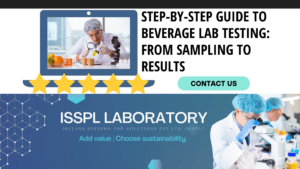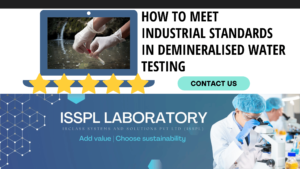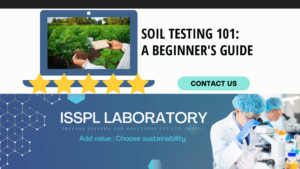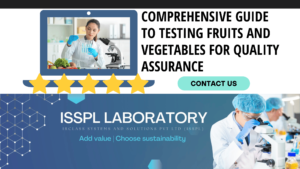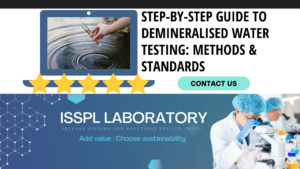An Overview by Team ISSPL - Analytical Testing Laboratory in India
ToggleBaseline monitoring is a significant part of monitoring programs. It is essential for a successful mining venture and requires optimal attention. Baseline monitoring is among the critical initial steps and helps incorporate feasibility solutions. The monitoring technique includes relevant environmental, economic, and social aspects that matter the most.
The environmental baseline study is a process of reviewing the air quality, rainfall index, noise level, terrestrial soils, hydrology, marine and freshwater quality and aquatic biota, river flow, oceanographic condition, forest fauna and flora, etc. Simply put, it is associated with community concerns like – education, health care, and the economy. The baseline information recognizes the significant areas of the operating stages and management steps.
The approach of baseline monitoring
Gathering baseline information on the spatial distribution of the species could be referred to as baseline monitoring. It is also called inventory monitoring, or assessment monitoring. It is a comprehensive process, and the number of counts can vary for a particular year. The process goes beyond simply collecting data throughout the year. It does not constitute monitoring, and the year is not used for the unitary measurement. A year’s estimate could be placed within a large framework of estimates collected from different years.
Over time, most organizations have included baseline research in the monitoring section to obtain a clarified overview. Why? Because it represents the preliminary step of developing a monitoring program. Baseline research requires systematic assistance and could be accomplished with the help of historical records of occurrence and abundance. It also includes interviews with experts who have extensive expertise and familiarity with the ecology and spatial distribution of various species. All these involve the actual collection of field data or a combination of multiple aspects. One can obtain an overview of basic ecological information and use it to define the level and frequency of data collection with the help of a monitoring program. The significance of these information pieces is integral and remarkable for diverse reasons.
Prime steps for environmental impact assessment
EIA follow-up comprises the following four elements – Do you know the different steps of environmental impact assessment or EIA? Before exploring the different steps, obtain an overview of the process. EIA is a systematic process of assessing the diverse environmental influences of a project or development. It includes an inclusive overview of inter-related socio-economic, cultural, and human-health impacts. EIA is significant because it takes the beneficial and adverse aspects into consideration.
- Monitoring – EIA monitoring includes the thorough process of data collection and comparison with diverse standards, predictions, and expectations. It comprises baseline monitoring of the preliminary stages of environmental indicators that matter significantly during the pre-decision steps. EIA monitoring is apt for the prediction and evaluation of critical information in an environmental impact statement or EIS. In fact, the significance of monitoring is also related to compliance regulations, facilitating decision-making requirements.
- Evaluation – The evaluation of the compliance standards, predictions, or expectations related to the environmental performance comprises an integral stage. In many cases, the evaluation stage is also called ‘auditing’. The audit and evaluation process involves a thorough and periodical evaluation of monitoring by comparing them with pre-defined norms and standards.
- Management – The management step involves appropriate decision-making and concerns with issues related to monitoring and evaluation activities. The management decisions could be made by proponents and EIA regulators.
- Communication – The communication stage involves notifying and informing the stakeholders about the analysis and results of EIA follow-up. It is an integral step to provide feedback on a project and is necessary for the implementation of EIA processes. Advocates and EIA regulators can be part of the communication programs, and the follow-up programs can extend beyond simplistic communication. It needs specialized attention to ensure stakeholder participation in the monitoring, evaluation, and management steps.
Prime aspects of environmental responsibility – Do you know the ideal ways to facilitate the environmental assessment process and compliance regulation? The steps may seem simplistic, but it needs meticulous effort. Know the apt ways to make the best choice –
- Implement a recycling program – One of the best ways to help the environment combat waste is through recycling. It creates a significant impact on the world and in workplaces, developing awareness among all. A recycling program can include separating paper, plastic, and different types of recycling materials. All these promote the best approach to environmental sustainability and save money in the long run.
- Encourage the use of alternative means of transport – It is an excellent approach to encourage employees to use public transportation. It can also include biking, or walking to reach the workplace, facilitating the process of reducing the environmental impact of commuting. It could be done by offering incentives and generating an optimistic awareness among all.
- Use green cleaning products – One can promote the use of green cleaning products and reduce the impacts of chemicals and toxins released into the environment. Products manufactured with natural ingredients do not contain harmful chemicals and are apt for the environment. In fact, these are also suitable for employee engagement and health.
- Encourage sustainable practices – Motivate employees to become proactive and mindful of their actions. These are necessary steps to reduce their environmental impact. It includes simplistic steps like turning off lights and electronics, unplugging chargers, etc.
- Support environmentally friendly vendors – It is a proactive approach to work with vendors who have an image of being environmentally responsible and committed. It also facilitates the entire process of boosting environmental friendly practices. All companies can utilize the approach to reduce their environmental impact. Promote working with vendors using sustainable materials, low-emission components, and energy-efficient resources.
- Measure and track progress – Measure the progress of the environmental initiatives adopted by the company and ease the process of EIA. It helps identify shortcomings and areas where the company can improve. It also facilitates the communication channel of the company to convey the progress to customers and stakeholders.
Promote green practices – For a better future.
It is high time to promote environmentally friendly and environmentally responsible products with the help of mindful assessment and monitoring. Baseline research and compliance regulation are effective ways to review the process carefully, promoting a greener future for all.

